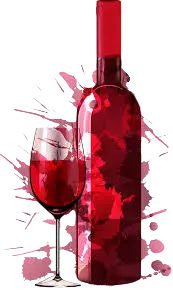Shopping for wine can sometimes feel like deciphering a secret code—especially when the label is filled with foreign terms. From French elegance to Italian tradition and Spanish passion, wine labels around the world are steeped in history, culture, and regional pride. Understanding these terms not only helps you choose a bottle with confidence but also deepens your appreciation for what’s inside the glass.
Why Labels Matter
Wine labels are more than just pretty designs. They tell the story of the wine: where it comes from, what grapes are used, how it’s made, and sometimes even the traditions behind it. The challenge? Each wine-producing country has its own language and rules for labeling, often using terms that don’t immediately translate.
Let’s break down some of the most common foreign wine label terms so you can shop and sip like a pro.
French Wine Labels
France is often seen as the birthplace of fine wine, but its labels can feel intimidating. Instead of naming the grape variety, French labels usually highlight the region.
Appellation d’Origine Contrôlée (AOC) – A certification guaranteeing the wine’s origin and that it meets strict quality standards.
Château / Domaine – The estate or property where the wine is produced.
Cru – Literally “growth,” it refers to the vineyard’s ranking, with Grand Cru being the highest.
Sec / Demi-Sec / Doux – Dry, semi-sweet, and sweet, respectively.
Example: A bottle labeled Chablis AOC tells you it’s a Chardonnay from the Chablis region of Burgundy, not just any Chardonnay.
Italian Wine Labels
Italy’s passion for wine is matched by its complex classification system. Unlike France, Italian labels often feature both the region and the grape variety.
Denominazione di Origine Controllata (DOC) – Ensures quality and origin.
Denominazione di Origine Controllata e Garantita (DOCG) – The highest standard with stricter regulations.
Classico – From the historic, traditional part of a wine region.
Superiore – A higher quality wine, often with more alcohol or stricter production rules.
Secco / Dolce – Dry and sweet, respectively.
Example: Chianti Classico DOCG signals a premium Chianti from the historic heart of Tuscany.

Spanish Wine Labels
Spain combines tradition with value, and its labels often reflect how long the wine has been aged.
Denominación de Origen (DO) – Similar to France’s AOC, marking quality and origin.
Denominación de Origen Calificada (DOCa) – The highest classification, reserved for the best regions.
Joven – Young wine, usually fresh and fruity, with little to no oak aging.
Crianza – Aged for at least 2 years, with 1 year in oak.
Reserva – Aged for at least 3 years, with 1 year in oak.
Gran Reserva – Aged for at least 5 years, with 2 years in oak.
Example: A Rioja Reserva DOCa tells you it’s from the Rioja region and has been aged to develop depth and complexity.
German Wine Labels
Germany is famous for Riesling, but its labels can be a puzzle with long compound words and ripeness classifications.
Trocken – Dry.
Halbtrocken – Off-dry (slightly sweet).
Kabinett – Light, fresh wines made from fully ripe grapes.
Spätlese – “Late harvest,” wines with more body and sweetness.
Auslese – Rich wines made from very ripe grapes, often sweet.
Eiswein – Wine made from naturally frozen grapes, very sweet and rare.
Example: Riesling Spätlese Trocken means a late-harvest Riesling that is vinified dry.
Tips for Decoding Any Label
Look for the Region – It usually indicates the grape variety and style.
Check the Classification – Terms like DOC, AOC, or DO highlight quality.
Sugar Levels Matter – Words like Sec, Secco, Trocken, or Dulce indicate sweetness.
Vintage – The year tells you when the grapes were harvested, which can affect flavor.
Conclusion
The language of wine labels might seem foreign at first glance, but once you understand the key terms, it’s like unlocking a map to the world of wine. Whether you’re exploring the elegance of French Grand Cru, the tradition of Italian DOCG, or the aging styles of Spanish Reserva, the label is your guide to what’s in the bottle.
Next time you pick up a wine with a mysterious label, you’ll know you’re not just buying a drink—you’re tasting history, culture, and craftsmanship.
Want to Explore Our Wines.
OneGrape wines cover a wide range of tastes and occasions.
Visit our shop today to order your specially selected wines.


